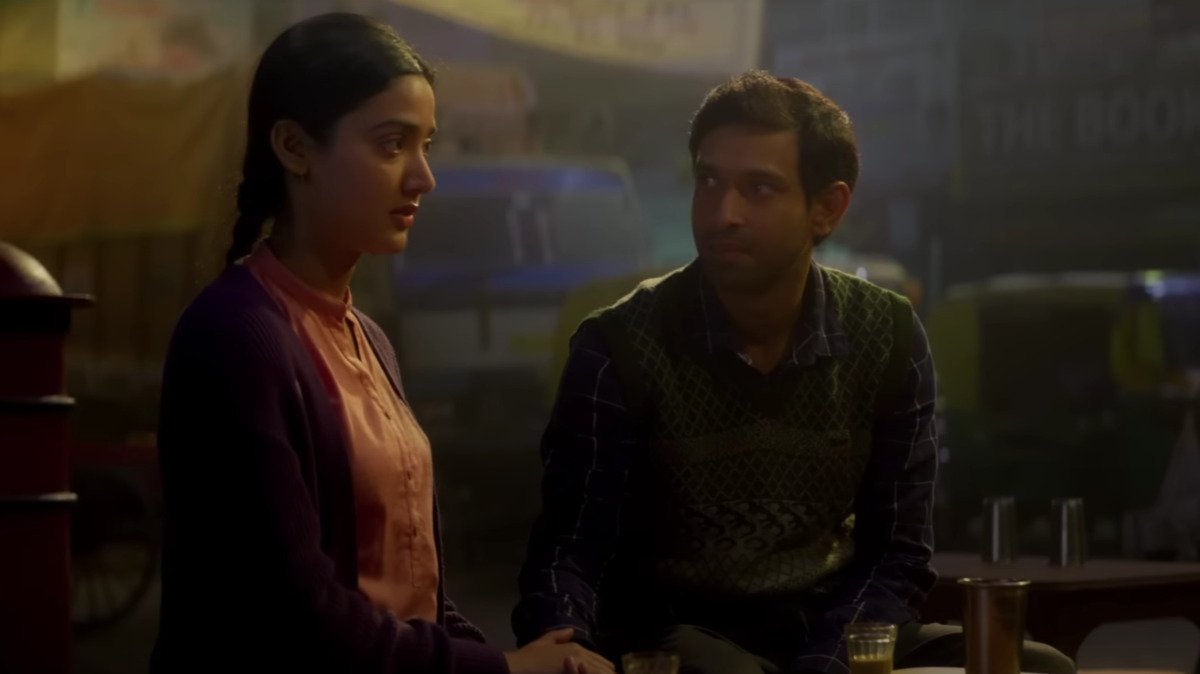Vidhu Vinod Chopra, a luminary in the realm of Indian cinema, has consistently strived to unravel complex societal narratives through his films. In his recent endeavor, “12th Fail,” Chopra took a daring approach by narrating the tale through the lens of an upper-class protagonist, challenging preconceived notions and prompting introspection about privilege, ambition, and social dynamics.
The decision to spotlight the narrative from the vantage point of an affluent, seemingly entitled protagonist like Manoj comes across as a deliberate choice on Chopra’s part. It serves as a compelling canvas to delineate the disparities and contrasts that exist within the layers of society. Manoj’s privileged background provides a stark contrast to the realities faced by those from less advantaged socio-economic strata. It allows the audience to witness the inherent differences in perception, struggles, and responses to life’s challenges.
One of the remarkable aspects of Chopra’s storytelling is the portrayal of dual perspectives through the character of Pandey. Pandey, who knows the complete story of Manoj, perceives his narrative differently compared to Pandey, who witnesses Manoj’s journey firsthand. This dichotomy in their perceptions accentuates the disparity in attitudes toward struggle, success, and societal privilege.
The former Pandey, acquainted with Manoj’s motivations and struggles, comprehends the rationale behind Manoj’s choices. He perceives Manoj as an inspiring figure, recognizing the weight of his aspirations and the hurdles he faces. In stark contrast, the latter Pandey, ignorant of Manoj’s backstory, views him through a lens of disdain, unfairly judging him as someone frivolously squandering opportunities. This disparity in perception subtly implores the audience to reconsider their biases and preconceptions about those striving against societal odds.
By presenting the affluent protagonist as someone attempting to navigate the challenges of life, Chopra aims to induce a shift in the perspective of the privileged viewers. The film provocatively challenges the audience to reevaluate their understanding of privilege and struggle. It compels them to acknowledge that the adversity faced by the underprivileged is far more arduous and demanding. It emphasizes the need for humility and empathy among the privileged, highlighting that their definition of struggle significantly differs from the realities faced by those without similar advantages.
Chopra ingeniously uses Manoj’s character as a vessel to advocate for a more empathetic and understanding society. He subtly communicates that if one cannot alleviate the hardships faced by the underprivileged, the least they can do is acknowledge the disparity and create pathways for those at a societal disadvantage to ascend and claim what is rightfully theirs.
Through this bold narrative choice, Chopra urges the audience to introspect and reevaluate their perception of privilege and societal struggle. The film not only entertains but also serves as a poignant social commentary, aiming to spark conversations and contemplation about the inherent disparities that exist in our society.
“12th Fail” is a testament to Chopra’s astute storytelling and his commitment to stirring societal conversations through the medium of cinema. His portrayal of an upper-class individual’s journey delivers a powerful and thought-provoking message, compelling the audience to acknowledge and bridge the gaps in societal understanding and empathy.
In conclusion, Vidhu Vinod Chopra’s decision to narrate “12th Fail” from the perspective of an upper-class protagonist is a deliberate and powerful choice, intending to provoke introspection and encourage a reevaluation of societal perceptions, biases, and privilege.
Harmonizing Melancholy: Vidhu Vinod Chopra’s Ode to Satyajit Ray
Vidhu Vinod Chopra, a master storyteller, often pays homage to the artistic brilliance of iconic filmmakers. In “12th Fail,” he ingeniously draws upon the craftsmanship of Satyajit Ray, a revered maestro in the realm of Indian cinema, by infusing the essence of melancholic music akin to Banshee’s style at strategic junctures within the narrative.
Chopra’s decision to incorporate flute’s poignant musical aesthetics is a subtle nod to Ray’s distinct narrative technique. Much like Ray, who seamlessly intertwined music to evoke emotions and accentuate storytelling, Chopra harnesses the emotive power of music to resonate with the audience on a deeper, more profound level.
The flute’s haunting melodies, reminiscent of Ray’s evocative compositions, serve as an emotional undercurrent, heightening the poignancy of pivotal moments in the film. These musical interludes, placed deliberately, intensify the emotional resonance of the narrative, lending a soul-stirring quality that resonates with the audience’s sensibilities.
The melancholic strains of Banshee’s music evoke a spectrum of emotions, from wistfulness to introspection, enriching the cinematic experience. The music becomes an integral part of the storytelling process, transcending mere auditory accompaniment to become a poignant voice that communicates the unspoken, the deeply felt, and the poignant nuances of the characters’ emotional landscapes.
Chopra’s adept use of flute’s music in “12th Fail” not only pays homage to Satyajit Ray’s cinematic legacy but also underscores the depth and richness of emotions within the narrative. It’s a testament to Chopra’s keen understanding of how music, when intricately woven into the fabric of storytelling, can elevate the viewer’s engagement and emotional connection with the characters and their journeys.
In essence, the infusion of flute’s melancholic music into “12th Fail” demonstrates Chopra’s commitment to creating a cinematic experience that transcends the visual narrative. It stands as a nod to the craftsmanship of Satyajit Ray while showcasing Chopra’s own masterful storytelling, amalgamating the power of music with the visual narrative to create an immersive and emotionally resonant cinematic tapestry.













Simply wish to say your article is as amazing. The clearness in your submit is just great and i could assume you are knowledgeable in this subject. Fine with your permission allow me to seize your feed to stay updated with drawing close post. Thank you one million and please continue the rewarding work.
My brother suggested I might like this web site. He was entirely right. This post actually made my day. You can not imagine just how much time I had spent for this information! Thanks!